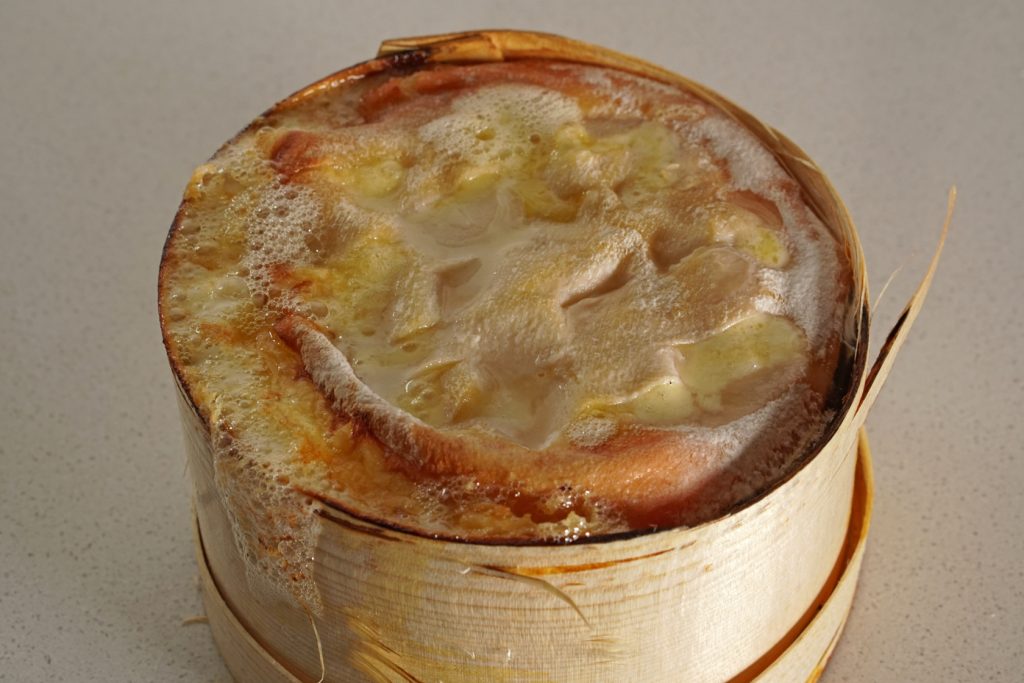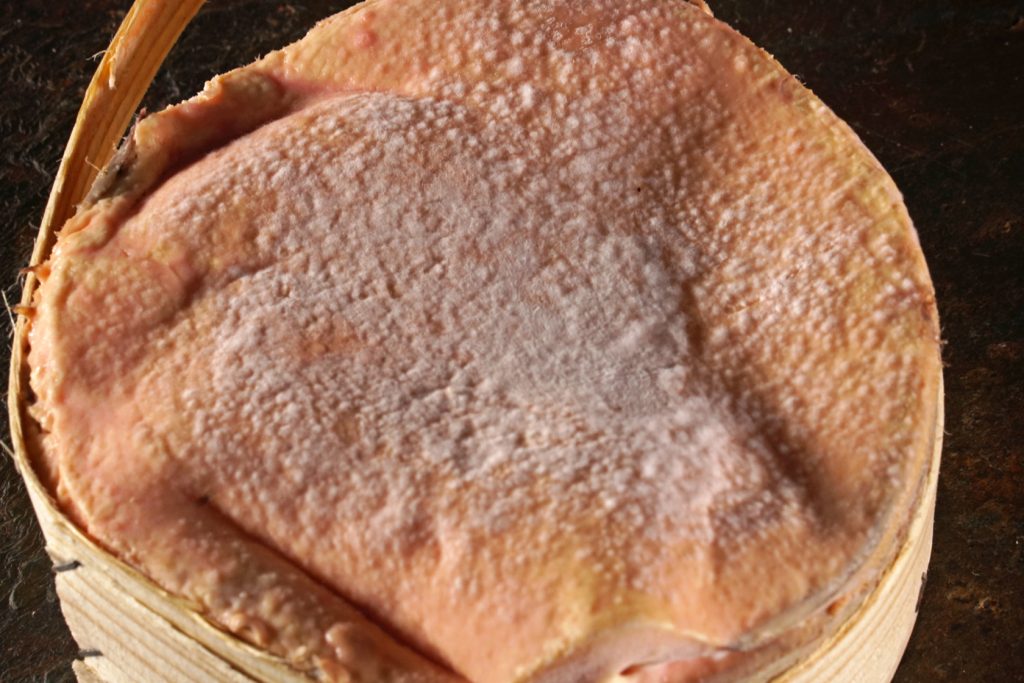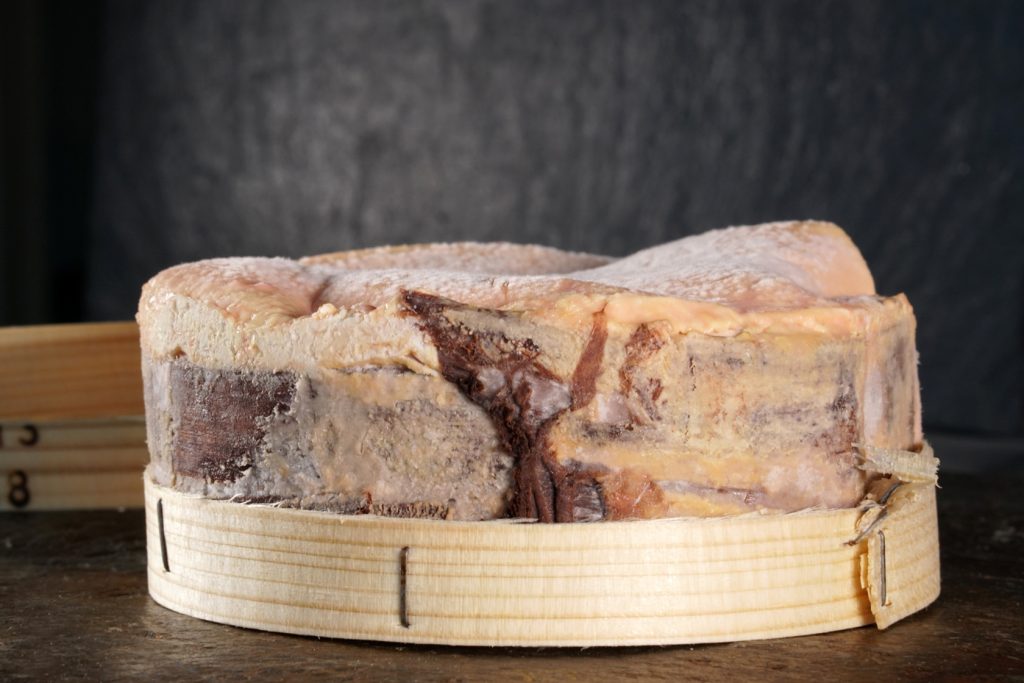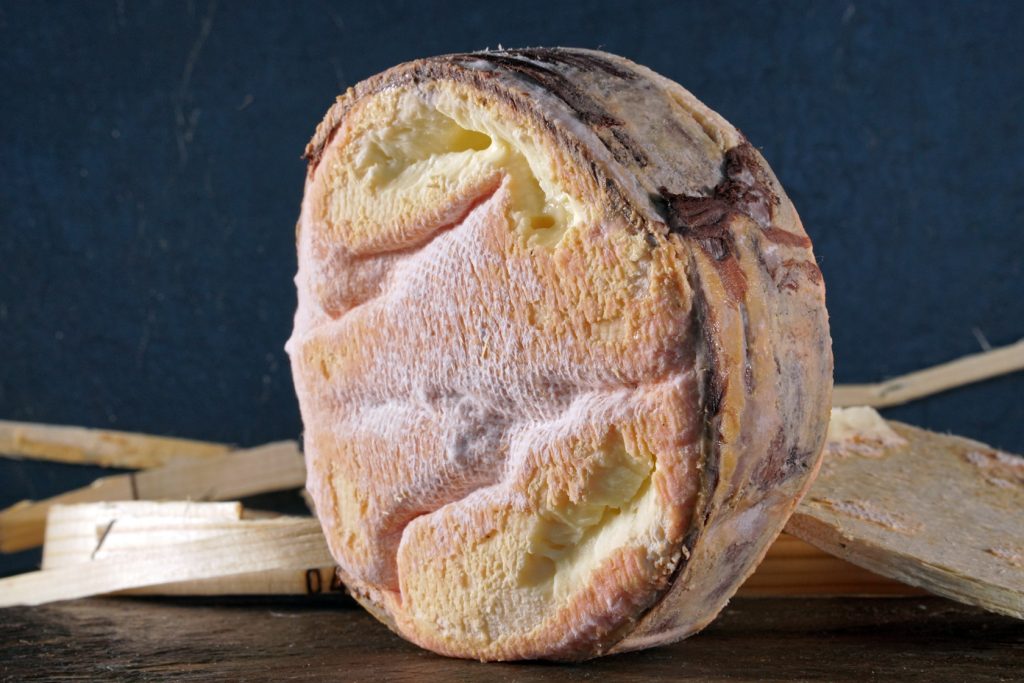I don’t know how it is for you, but I sometimes get confused; there is a French *Vacherin Mont d’Or AOP* and a Swiss one. But what exactly is the difference and which one is the “real” one and is there even a “real” and a “non-real one”?
Most important things first – they are both real!
But there are indeed two “kinds” of *Vacherin Mont d’Or AOP* – the Swiss and the French and they are indeed “same, same but different”.
To break it down the simple way;
Swiss *Vacherin Mont d’Or* is made of thermized cow’s milk, meaning raw milk is gently heated, just enough to reduce unwanted bacteria but not as high as to damage the components of the milk.
The French *Vacherin Mont d’Or (du Haut Doubs)* on the other hand is made of raw cow’s milk.
Both are the washed rind cold season relative of a summer king -Switzerland`’s Gruyère and France’s Comté.

The story of French *Vacherin Mont d’Or* dates back to the 12th century when the highlands of the Jura region were cleared of trees. From that moment on cows could set foot on the ground and the cheese production started to take pace in the area. The above mentioned hard pressed icons are produced in the summer when the milk is rich and milk production is high and the lightly pressed and soft *Vacherin Mont d’Or* is produced in the less milk-extensive Winter months. The Swiss pendant however was first marketed in 1865.
But what exactly are now the differences between the French and the Swiss *Vacherin Mont d’Or*?
Well besides their own unique tastes the production of *Vacherin Mont d’Or AOP* in both countries has to follow a strict guideline that delivers the building blocks of their look, consistency, aroma and flavor.
The Swiss and the French guidelines naturally differ (mainly on the raw vs. thermized milk) but nonetheless we tried to put them together in one short overview:
-
- production is only between 15th of August and March 31st (March 15th for the French)
- for the French only milk from cows of the Montbéliarde or French Simmental Breed are authorized whereas Switzerland doesn’t seem to have a rule on this.
- both have a designated area of production
- besides milk only natural rennet, traditionally obtained cultures and salt are allowed ingredients
- special requirements on fodder –no silage, PH has to be below a certain number etc.
- time-sensitive production after the milking (20h for Switzerland, 24h for France)
- ripening on spruce boards (minimum 17days in CH, min. 21 days in F)
- special requirements on handling (both after pressing the curd get a spruce-belt), packaging (both are packaged in a spruce box) and labeling (both have to have the brand of origin).
(For the entire guidelines click here for France – and here for Switzerland. )
But now to the maybe most important question – how do they differ in taste, consistency and look?
As with all cheeses – flavors and aromas differ from farm to farm as well as animal to animal and even designated AOP cheeses don´t make an exception to the rule. For our *Vacherin Mont d’Or* taste off we had 3 different “kinds” – one from Switzerland and two from France. Here some pictures alongside our experiences;



Gustav says no matter if you cut it, strip it, drip it, scoop it or dig in it *Vacherin Mont d’Or* is a true 13/10 cheese soldier he wishes would be around all year long.





for more information and to see our sources:
here the official website of Mont d’Or in France and the Swiss one.






